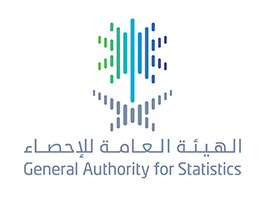Official government website of the Government of the Kingdom of Saudi Arabia
Links to official Saudi websites end withgov.sa
All links to official websites of government agencies in the Kingdom ofSaudi Arabia end with .gov.sa
Government websites use theHTTPSprotocol for encryption and security.
Secure websites in the Kingdom of Saudi Arabia use the HTTPS protocolfor encryption.

Saudi Arabia's Merchandise Exports Increase During April 2022 by (98.0%)
23-06-2022
Appointment of Dr. Fahad Al-Dossari as GASTAT's President
19-06-2022
GASTAT Conducts Statistical Surveys through Telephone Interview
12-06-2022
GASTAT: General Real Estate Price Index for Q2 of 2022 Increases by 0.7%
07-06-2022

Saudi Arabia's Merchandise Exports Increase During April 2022 by (98.0%)
23-06-2022
Appointment of Dr. Fahad Al-Dossari as GASTAT's President
19-06-2022
GASTAT Conducts Statistical Surveys through Telephone Interview
12-06-2022
GASTAT: General Real Estate Price Index for Q2 of 2022 Increases by 0.7%
07-06-2022